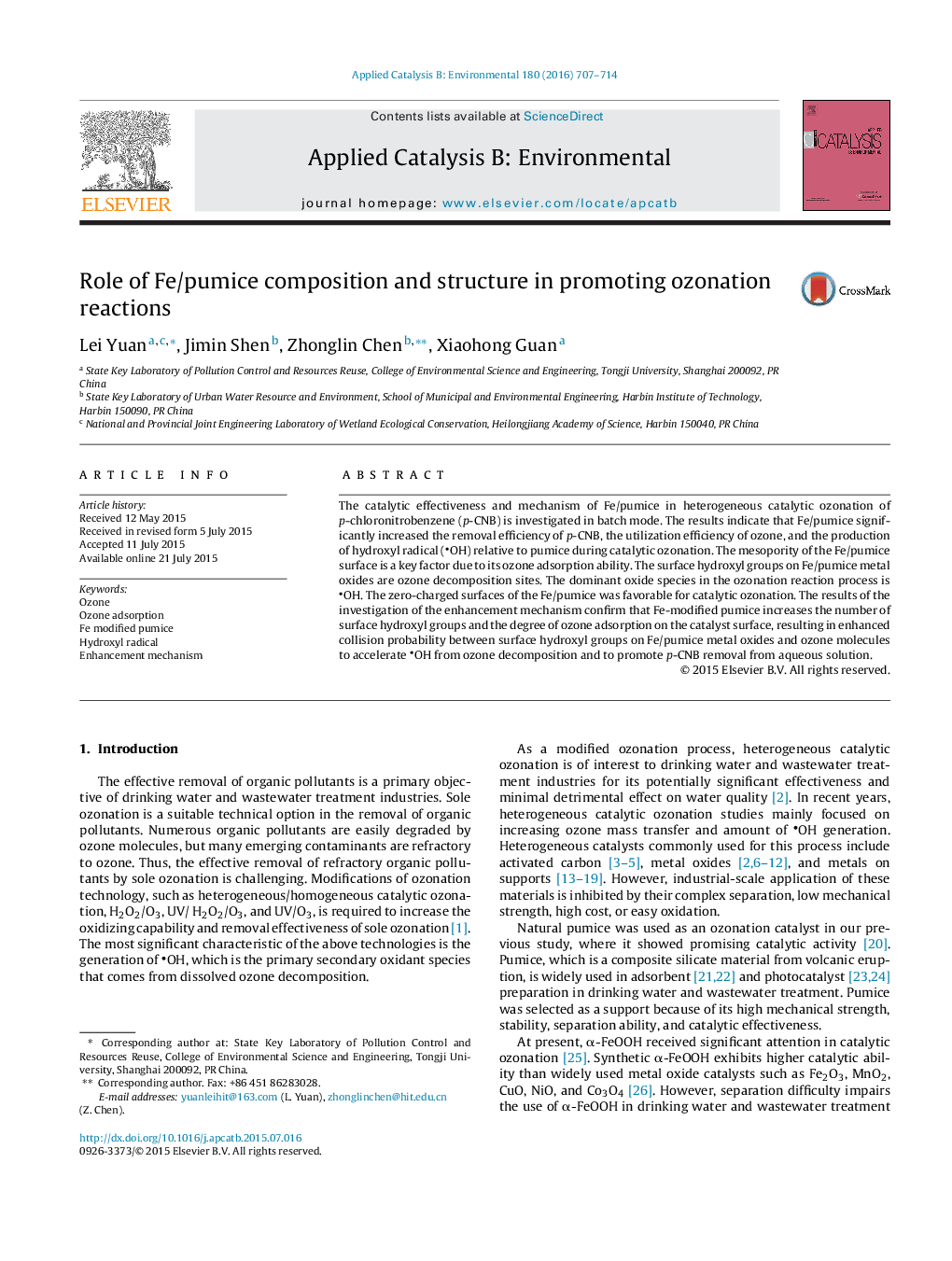| Article ID | Journal | Published Year | Pages | File Type |
|---|---|---|---|---|
| 45291 | Applied Catalysis B: Environmental | 2016 | 8 Pages |
•Fe-modified pumice as an ozonation catalyst.•Modification increases the amount of ozone decomposition sites and ozone adsorption.•Ozone decomposition sites have an interaction with ozone adsorption for OH.•Fe/pumice promote ozone decomposition to generate high amount of OH.
The catalytic effectiveness and mechanism of Fe/pumice in heterogeneous catalytic ozonation of p-chloronitrobenzene (p-CNB) is investigated in batch mode. The results indicate that Fe/pumice significantly increased the removal efficiency of p-CNB, the utilization efficiency of ozone, and the production of hydroxyl radical (OH) relative to pumice during catalytic ozonation. The mesopority of the Fe/pumice surface is a key factor due to its ozone adsorption ability. The surface hydroxyl groups on Fe/pumice metal oxides are ozone decomposition sites. The dominant oxide species in the ozonation reaction process is OH. The zero-charged surfaces of the Fe/pumice was favorable for catalytic ozonation. The results of the investigation of the enhancement mechanism confirm that Fe-modified pumice increases the number of surface hydroxyl groups and the degree of ozone adsorption on the catalyst surface, resulting in enhanced collision probability between surface hydroxyl groups on Fe/pumice metal oxides and ozone molecules to accelerate OH from ozone decomposition and to promote p-CNB removal from aqueous solution.
Graphical abstractFigure optionsDownload full-size imageDownload as PowerPoint slide
